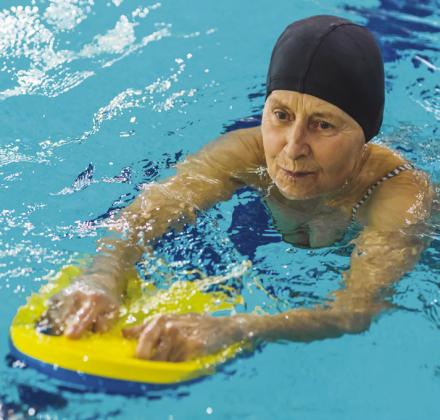WHEN WE HEAR THE TERM “ARTHRITIS,” we tend to think of the most common form of the disease, osteoarthritis, which develops as normal wear and tear breaks down the cartilage in the joints. But for people with rheumatoid arthritis, or RA, inflammation and pain in the joints occurs not as a result of the normal aging process, but due to an immune response gone awry.
What is RA?
More specifically, RA occurs when the body’s immune system attacks the synovial membrane lining the joints, causing it to become inflamed. The cartilage in the joint—the natural “shock absorber”—then begins to break down, resulting in bone damage. The disease process can also weaken and stretch supportive tendons and ligaments, leading to deformity and misalignment of the joint. Other parts of the body, such as the skin, eyes, heart, circulatory system, and/or lungs, may be affected in various ways as well.
What causes RA?
Exactly what causes this autoimmune response is not fully understood. According to the Arthritis Foundation’s website (arthritis.org), “Researchers aren’t sure why people develop RA. They believe these individuals may have certain genes that are activated by a trigger in the environment, such as a virus or bacteria, physical or emotional stress, or some other external factor.”
RA symptoms and risk factors Whatever the trigger may be, common warning signs include joint pain, tenderness, and swelling; joint stiffness, especially in the morning; and fatigue. Typically, multiple joints are affected and there is a symmetrical presentation to the symptoms—meaning that pain and swelling tend to arise in the same joint on both sides of the body. Symptom onset may be very gradual or sudden. Some people with the disease may have symptoms consistently while others may experience periods of remission and flare-ups. Still others may have a bout with symptoms and then go into remission for the rest of their lives.
Though anyone can get RA, the risk of developing it increases with age and is significantly higher for women than men. Certain gene variants may be involved as well, though the exact role they play is not clear. Other potential risk factors that the Arthritis Foundation identifies include infections, such as Epstein Barr, E. coli, or hepatitis C; exposure to certain toxins, such as secondhand smoke, asbestos, silica dust, or pesticides; exposure to the stress of childhood trauma; and various lifestyle-related factors such as smoking, obesity, gum disease, or poor diet.
Treating RA
There is no cure for RA, but in many cases it can be managed effectively, especially if aggressive treatment is initiated early in the disease process. Rheumatologists have a wide variety of medications at their disposal for fighting pain, reducing inflammation, slowing the progression of the disease, and disrupting the body’s abnormal immune response. In severe cases that don’t respond to treatment with medications, surgery to repair or replace damaged joints may be an option. Every case is unique, so treatment is likewise individualized. Of course, adopting healthier lifestyle habits can be helpful as well.
The role of exercise
Regular exercise—particularly low-impact forms such as swimming, cycling, stretching, walking, or using an elliptical machine—can be very beneficial for people with RA. Exercising can help reduce joint pain and stiffness, build or maintain bone mass, and stabilize the joint by strengthening the surrounding musculature.
However, it’s important to consult with your rheumatologist before beginning any exercise regimen. He or she may recommend exercising when you’re not experiencing symptoms and giving your body rest during flare-ups. Also, it’s a good idea to work closely with a physical therapist who can help you develop a personalized workout plan as well as teach you how to perform the exercises properly and safely so you can achieve the most benefit.
Don’t ignore RA symptoms!
If you’re experiencing the symptoms described above, don’t ignore them or dismiss them as insignificant. See your doctor to rule out the possibility of rheumatoid arthritis. Remember, the earlier in the disease process treatment is begun, the more positive the outcome and the greater the odds that you’ll avoid disabling joint damage. ✲



